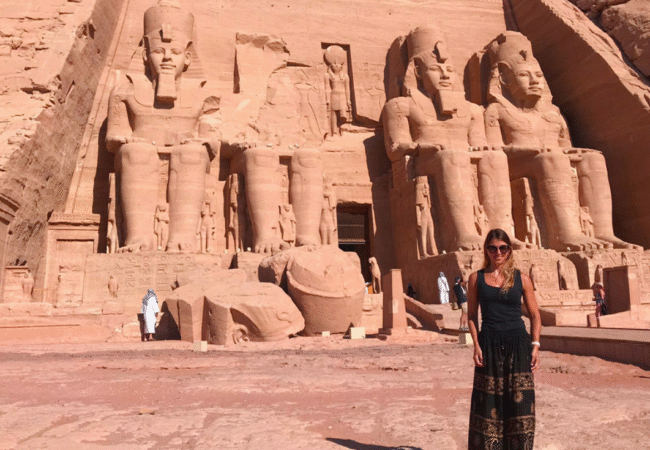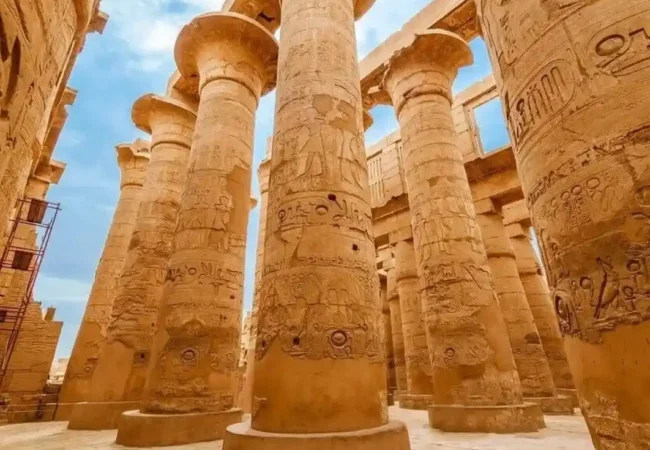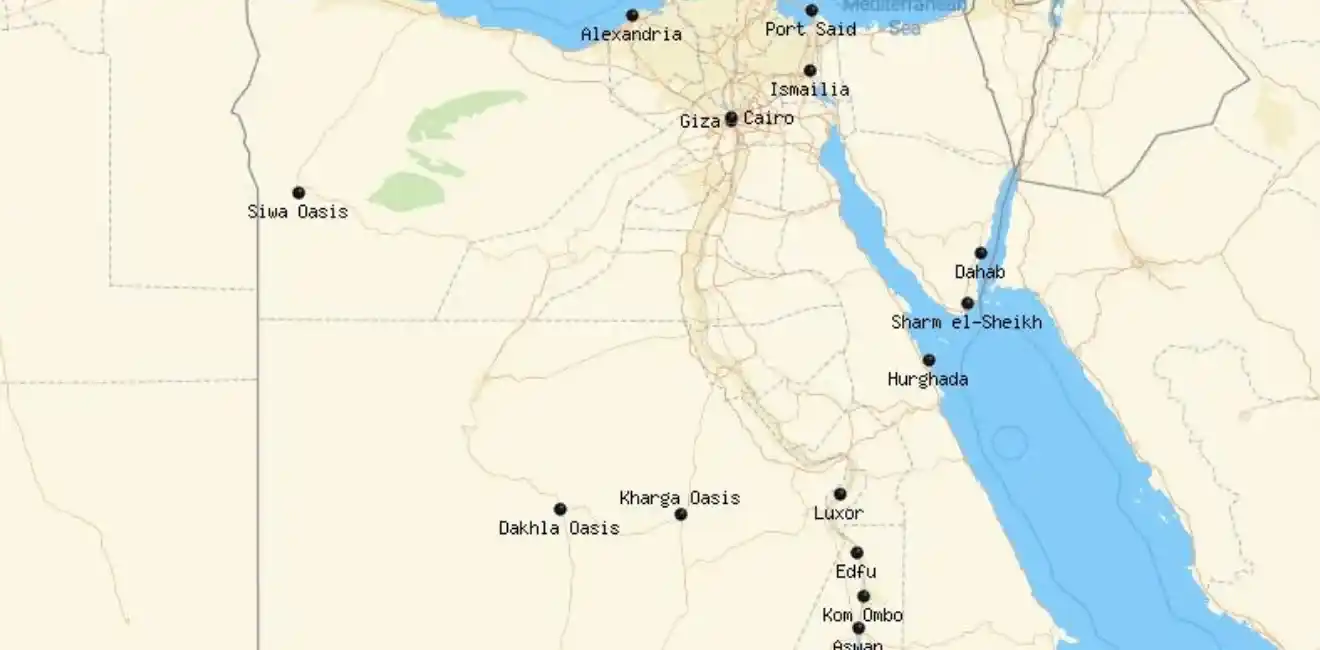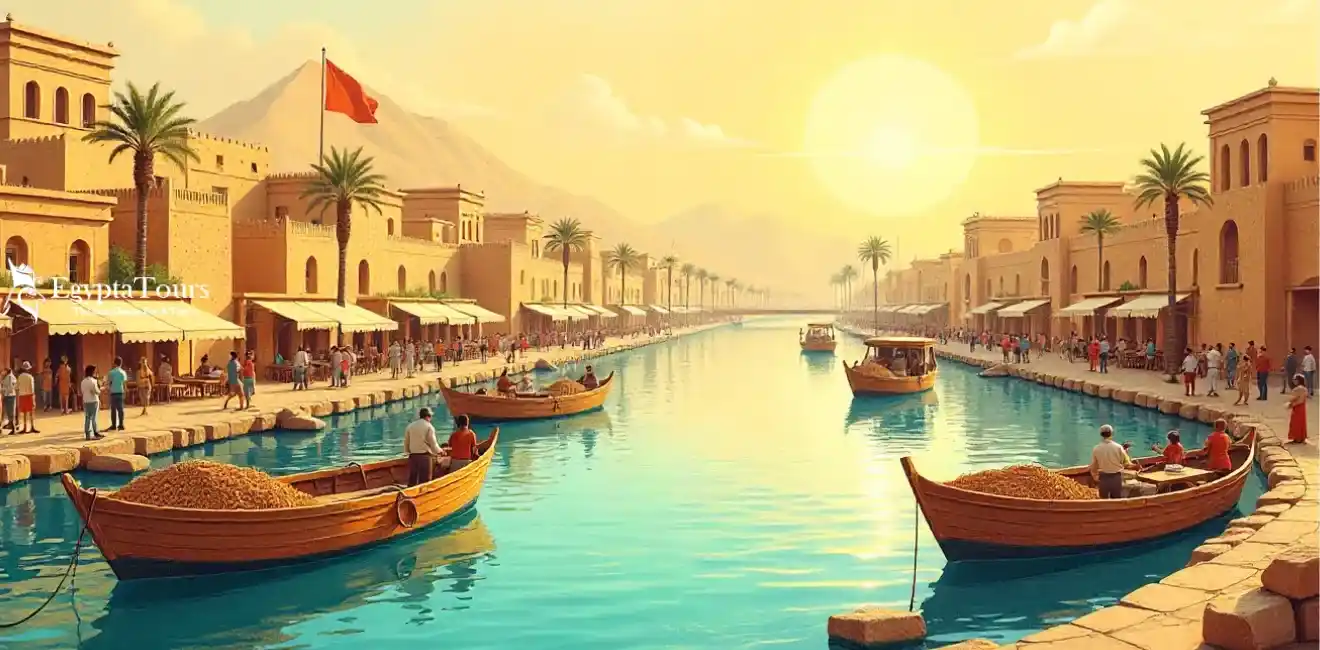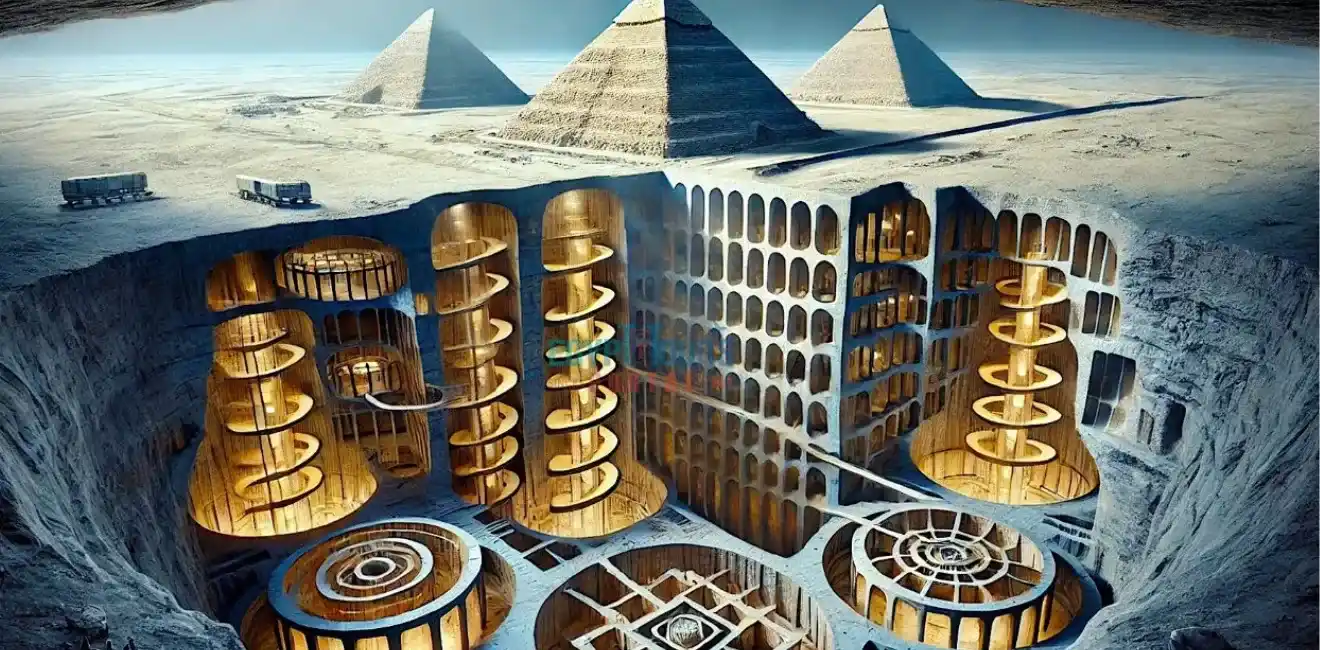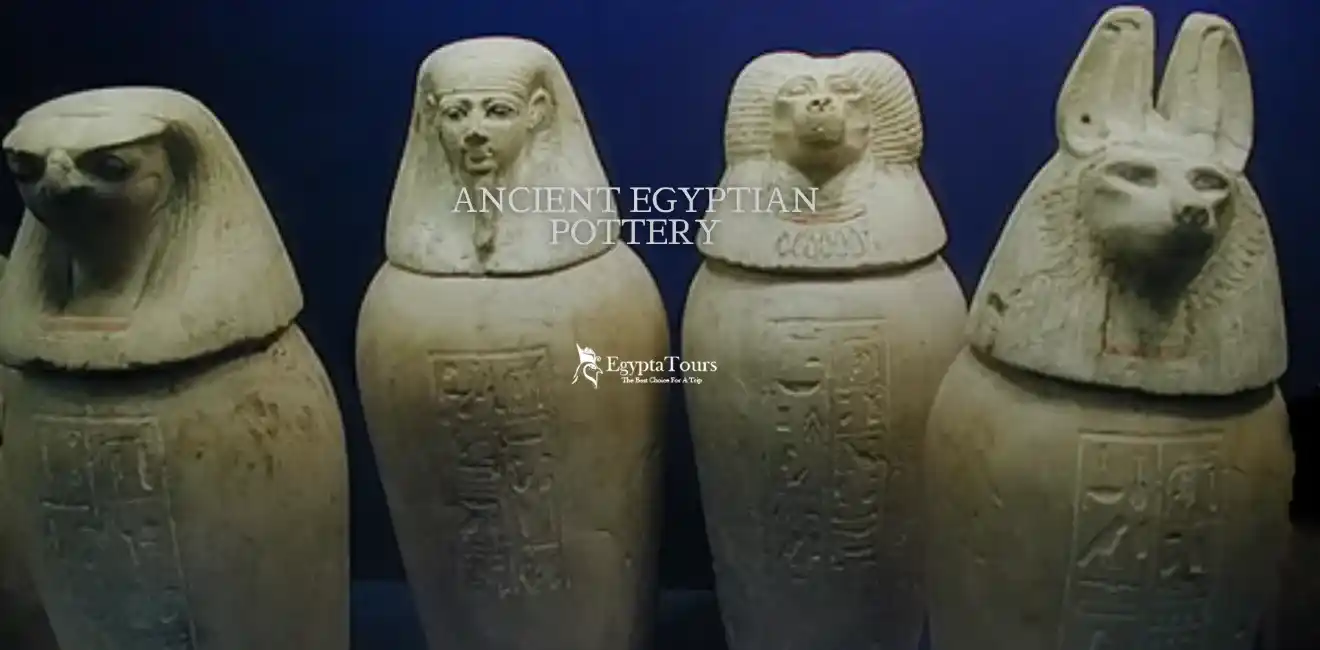
Ancient Egyptian Pottery
Ancient Egyptian pottery is one of the most important archaeological artifacts preserved over time, It is a primary source for understanding the daily economic, and religious aspects of ancient Egyptian society.
Pottery includes all tools made from fired clay and is considered one of the oldest innovations used by Egyptians since the beginning of civilization whether in homes, temples, or tombs.
The importance of this pottery lies in its versatility and the richness of its types making it a fundamental subject for the study of Egyptian archaeology.
Ancient Egyptian pottery had many uses in the daily lives of ancient Egyptians. It was an integral part of domestic and ritual activities.
The most important of these uses include:
- Food Storage: Pottery jars were used to store grains, oils, honey, dates, and other foodstuffs.
- Water and Drink Transport: Egyptians used jugs and vases to transport water, beer, and wine to and from homes and temples.
- Food Preparation: Pottery molds were found for baking bread, cooking pots over fires and vessels for mixing and kneading.
- Lighting: Simple pottery lamps were made to provide lighting in homes and tombs.
- Funerary Uses: Many pottery vessels were found in tombs indicating their use in burial rituals and the belief in life after death.
Distinguishing the Types of Clay Used in Ancient Egyptian Pottery
Specialists in ancient Egyptian pottery have distinguished between two basic types of clay Nile clay and marly clay based on their chemical and mineral compositions and manufacturing characteristics, as follows:
- Nile clay is the result of erosion in the Ethiopian mountains, It was carried By <strong>the Nile River</strong> to Egyptian lands where it has been deposited on its banks since the late Pleistocene. This clay is characterized by its high silica and iron oxide content and contains particles of sand and various stones.
- Marly clay is a yellow-to-white clay formed from calcareous sediments dating back to the Pleistocene period carried by the ancient rivers of the Nile to the edges of the desert. This clay is characterized by its low silica content and high calcium content. There are subtypes such as Qena clay resulting from the mixing of sediments with local slate and limestone.
- Mixed Clay (resulting from a blend of Nile clay and marly clay). In some cases craftsmen used a combination of the two clays to achieve intermediate properties combining strength and softness, or to meet specific functional requirements for the vessel.
Choosing Raw Materials According to Purpose and Use
The choice of clay type in ancient Egyptian pottery was not random, but rather was subject to a number of factors, the most important of which are:
- The purpose of the vessel. Everyday vessels were made from Nile clay due to its availability and ease of shaping. Luxury decorative vessels, or vessels used in religious rituals were often made from marly clay due to its high quality.
- The location of the workshop: Proximity to the clay source often determined the type of clay used.
- Societal Demand: Vessel types and specifications changed according to the changing needs of the population over the ages.
Sources of Clay Collection in Ancient Egypt
There were several methods for collecting clay for ancient Egyptian pottery, as follows:
- The banks of the Nile and waterways. Clay was dredged from areas close to agricultural lands.
- Deserts and valleys: Marly clay was collected from remote areas often from limestone hills or deserts.
- During excavation the digging of canals or reservoirs produced quantities of clay that could be used for pottery.
- Reliefs in the tomb of Rekhmi-Re (TT100) show scenes of workers collecting clay using picks, evidence of primitive collecting techniques.
Stages of Ancient Egyptian Pottery Manufacturing
The process of manufacturing ancient Egyptian pottery went through several stages beginning with collecting the clay then preparing and shaping it, and finally decorating and firing it as follows:
Preparing the Clay
- Removing Impurities
- Moistening the Clay to Make It Suitable for Kneading and Shaping
- Leaving It to Rest Before Shaping
Shaping the Vessel
Primitive tools were used to shape vessels by hand or using a potter’s wheel.
Decorating and Burnishing
Craftsmen relied on two main techniques in ancient Egyptian pottery making:
- Pressless burnishing produces a subtle sheen and is used for simple vessels.
- High-pressure glazing (firing) produces a high luster and is used for luxury vessels.
Firing
Pottery was fired in open or closed kilns depending on the time period and desired results. Temperature and oxygen control affected the color and quality of the final product.
Decorative Methods and Artistic Techniques
The ancient Egyptians used several artistic methods to decorate ancient Egyptian pottery, including:
- Pre-firing engraving.
- Color and paint decoration.
- Sculptural decoration.
- Vessel shapes varied over time for example bread molds evolved between the end of the Old Kingdom and the beginning of the Middle Kingdom.
Pottery Classification according to the Vienna System
In 1980 a number of researchers including Dorothea Arnold and Hans-Ake Nordström developed the “Vienna System” for classifying ancient Egyptian pottery.
This system is based on:
- Clay type.
- Decorative style.
- Shaping and firing method.
- Time period.
Pottery Chronology – Serialization relative
In 1899 Flinders Petrie invented a method known as the “Seriation of Ancient Egyptian Pottery,” which traces the development of pottery shapes across the ages as follows:
- It enabled researchers to link historical eras to artistic stages.
- It provided an effective dating tool for sites without clear inscriptions or dates.
Vitreous Technology at the Heart of Pharaonic Pottery
“Fayence” is an Egyptian vitreous material made of ground quartz and alkali salts. It is characterized by a blue-green luster associated with fertility and eternal life.
Three basic methods of making faience have been identified These are:
- Self-secretion (salt efflorescence).
- Compensatory method (application).
- Autocementation.
Recent craft studies have provided evidence of the feasibility of each method and the varying quality of finishes. The most accurate research (such as the 2023 MDPI) revealed that the body is composed of more than 90% quartz with proportions of calcium sodium, and small amounts of heavy metals proving that the Egyptians created the first advanced glass technology 5,000 years ago in ancient Egyptian pottery.
Ancient Egyptian Pottery as a Geological Portrait
Researchers have mastered the technique of petrographic analysis (thin slice analysis) to reveal the geological composition of Egyptian pottery.
This method allows us to determine whether a vessel was made of Nile clay, marly clay or a mixture of both by analyzing elements such as quartz mica, gypsum, and even plant remains within the sample.
Studies such as those coordinated under the Vienna II System from 2012–2016 have shown subtle differences between vessels from different regions and time periods. Raw Nile clay was used, or with vegetable milk or lime in periods. Predynastic while the marly mixture appeared during the Old and New Dynasties.
One of the results of this analysis is that based on petrographic composition it has become possible to determine the location of a manufacturing workshop or a pottery trade network across ancient regions giving us a more accurate perspective on understanding the manufacturing environment and cross-border trade messages.
The Importance of Pottery in Understanding Ancient Egyptian History
The change in the forms of ancient Egyptian pottery was not simply a result of technological development; rather it reflected social, economic, and cultural changes. For example some changes in vessel shape were linked to economic transformations or public taste.
Not every change was linked to political events or a transfer of power.
Conclusion
Ancient Egyptian pottery is an invaluable archaeological document that has contributed to understanding the fine details of a civilization that spanned thousands of years.
By studying clay techniques, decoration, and chronological development scholars have been able to draw a complete cultural map of ancient Egyptian life making pottery one of the most important pieces of evidence in Egyptian archaeology.
FAQS
When was pottery invented in Egypt?
Pottery was invented in Egypt in the late Neolithic period. The Neolithic period, specifically around 4400 BC, during the Badari civilization in Upper Egypt saw the ancient Egyptians use pottery as a basic tool for water conservation, grain storage, and cooking.
Pottery at this stage was characterized by its fine craftsmanship and simple decoration demonstrating an advanced level of skill and early artistic flair.
Which civilization invented pottery?
It is believed that pottery was first invented in East Asian civilizations particularly in China about 14,000 years ago at the end of the Paleolithic period. However it quickly spread to other agricultural civilizations such as those of the Nile Valley and Mesopotamia.
Pottery was one of the first innovations to emerge with agricultural settlement meeting the needs of storage and transportation and later becoming an artistic and cultural tool that expressed the cultural identity of each society.
What are the most famous types of Egyptian folk pottery?
The most important types of ancient Egyptian folk pottery include “Qena pottery,” produced in Qena Governorate and characterized by plant decoration and muted colors and the “Saidi jar,” a handcrafted pot used to store drinking water in the countryside.
Nubian pottery is distinguished by its bright colors and traditional inscriptions. Fustat pottery is also famous as is Fustat pottery which is produced in the Fustat area of Cairo and is considered one of the most famous types of traditional pottery based on historical techniques dating back to the early Islamic era.














